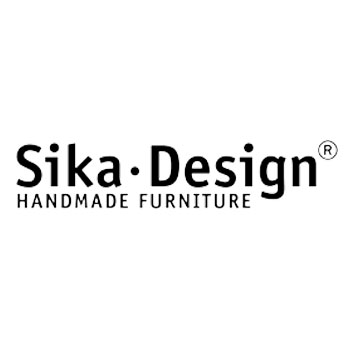You are in a different country
Do you want to continue browsing the website
or change your country?
Your dream house is one step away from you.
Subscribe to our newsletter and get 10% off orders of at least £100,00!
Enjoy it and don’t miss out on our offers and updates.











Sika Design
Sika Design was born in 1940 thanks to Ankjær Andreasen. Today the company is run by the third generation of the family, and the brand has never lost his leading role in the production of furniture characterized by comfort, quality and environmental awareness. His rattan furniture is handed down from generation to generation. Today, many homes, hotels, restaurants and cruise ships around the world are decorated with the unique design of Sika products.
Ankjær Andreasen named his company after the deer Sika (also known as "deer of Japan"), a majestic animal, but at the same time very elegant. The company was founded in Horsens, Denmark, where during the war unemployment was growing and there was a complete lack of raw materials. This is perhaps the main reason why the production of the brand is based on the use of natural raw materials such as straw collected from the fields after harvest, or reeds from the marshes.
We can say that Sika Design has revolutionized the production of rattan furniture, studying methods and processing techniques that are absolutely innovative. Ankjær Andreasen has always collaborated only with the best wicker producers and together they have perfected the art of processing this particular natural material, focusing in particular on what would later become the sign of the corporate identity: comfort, quality and design.
Around 1960, the Sika Design company has began to export its products all over Europe, often participating in international furniture fairs and exhibitions. In this decade, the brand launches a revolutionary collection of furniture, using materials such as teak and steel. Ankjær Andreasen was undoubtedly a pioneer in the search for new elements for his creations. In 1972, he decided to expand towards the Far East by buying a piece of land in Malaysia, and establish there a facility for the production of rattan furniture.
In the ‘80s, the company went through a real moment of glory; these are the years of the boom in the sector of verandas and outdoor spaces, so the demand for wicker and rattan furnishings grew exponentially. In 1992, the designer Yamakawa joined the Sika team, and this collaboration will soon reach a great success. In the same period the brand acquires the shares of its largest competitor, the company Horsnaes, becoming Sika-Horsnaes.
In 2003, Sika-HORSNAES introduced its first outdoor collection called In-Out: textiles and garden furniture in synthetic rattan that were immediately loved by customers all around the world. The peak of this brand's success was reached in the field of outdoor furnishings thanks to the Sika-Icons collection: romantic wicker and rattan chairs and furnishing elements like the Madame armchair with cushion designed by Nanna & Jørgen Ditzel in 1951. The suspended chair Egg Indoor is another result of the creativity of these designers, which is an egg-shaped design object that can hang from the ceiling of your house or from a branch in the garden, to allow you to swing in full relaxation. A piece of furniture that right from the beginning has gained a huge popularity in the world. An extremely important factor for Sika Design is to produce furniture items using only sustainable and environmentally friendly materials.
But who are the designers who contributed to the success of Sika Design?
Viggo Boesen
He is an architect who designs his lines of rattan and fabric pieces following a precise philosophy: all products must follow a kind of organic flow and embrace the body smoothly, with tenderness. Complements that must be a feast for the eyes, but also strong and durable. His stunning and imaginative designs have made him one of the leading designers of the "Danish Golden Age".
R. Wengler
Born in Germany, he has perfected over the years his craft skills in the production of wicker furniture and in the use of materials such as reed and willow, easily purchased in Europe. Robert Wengler is now known as the best wicker manufacturer in Denmark and many famous architects went to his studio to acquire his know-how and understanding of weaving methods and wickerwork. R. Wengler today stands out as one of the pioneers in the production of rattan. What he did for the handicraft sector and the way in which he challenged the material, has opened the door to a new way of conceiving rattan furniture.
Franco Albini
He was an Italian neo-rationalist architect and designer, known to combine modern furniture and minimalist design with the traditional Italian craftsmanship, using for his creations very cheap materials. He had a great success in 1950 when he created a series of famous objects including the rattan chairs Margherita and Gala, both part of the permanent exhibition at the New York Museum of Modern Art (MOMA). He also won three Compasso d'Oro awards, the most prestigious award in the field of Italian design.
Nanna Ditzel - Ditzel Design
The suspended Egg chair is an object that is loved by the critics and has enjoyed a great success all over the world: its distinctive sculptural egg shape was created by Nanna Ditzel & Jørgen in 1959. The design of the "Egg Chair Hanging "it is a timeless classic, which has given rise to many interpretations in different and innovative materials. After the death of Jørgen Ditzel in 1961, Nanna went on designing and, in 1968, she moved to London where she established the International Furniture and Design Centre Interspace, an institution that has developed a great reputation as a center for experimental design. In 1986, she returned to Denmark, in Copenhagen, where she opened a facility serving as design workshop and studio for the design of furniture.
Arne Jacobsen
He was born in 1902 in Copenhagen. At first, he wanted to become a painter, but then he was admitted to the School of Architecture at the Royal Danish Academy of Fine Arts. He studied with Kay Fisker and Kaj Gottlob, both architects and designers, and this background allows the talented student to win in 1925 the silver medal for the Cattedra of Paris, for his first piece of furniture exhibited at the World Fair in Paris. In 1929, only two years after graduation, Arne Jacobsen won the first prize for the development of ultra modern concept for "The house of the Future" at the Housing Exhibition of the Association of Academic Architects in Copenhagen. The house built for the exhibition confirmed Arne Jacobsen as one of the most visionary and progressive Danish architects of the time. At the same time, the house was the first example of effective modernist architecture in Denmark. It was a flat house with a spiral-shaped roof in glass and concrete, incorporating a private garage, a boathouse and a helicopter.




